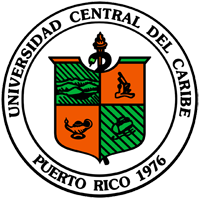Post Associate Certificate in Vascular Sonography
Curricular Design
The Post Associate Certificate in Vascular Sonography is designed according to the curricular recommendations developed by the American Society of Radiologic Technologists (ASRT) and the academic preparation requirements established by the American Registry for Diagnostic Medical Sonography (ARDMS) for those wishing to obtain the credential of a specialized technologist in vascular sonography.
Students in the program must complete eight specialization courses equivalent to twenty-four (24) credits. These are divided into six theoretical courses of three (3) credits each, and clinical practice equivalent to two courses of three (3) credits each. All will be offered in the same format as the other specialty certificates affiliated with the Medical Imaging Technology Program.
Description of the Vascular Sonography Technologist
The vascular sonographer is a highly trained healthcare professional capable of performing detailed studies of anatomical structures using vascular ultrasound and Doppler techniques. This specialist applies appropriate tracking techniques and protocols, categorizes communication processes and patient care, and integrates theoretical principles into real practices. Additionally, they interpret medical orders, guide patients on the instructions for each routine and protocol, and review clinical studies to obtain accurate diagnoses. They analyze the sonographic anatomy of vascular structures, classify, identify, and correct common artifacts. They are governed by laws and professional standards, assuming leadership roles. This professional can work in hospitals and clinics, imaging diagnosis centers, specialized medical offices, research laboratories, educational institutions, and medical equipment companies, adapting to various contexts within the healthcare field.
Graduate Profile
The Vascular Sonographer is trained to perform the following functions:
- Apply appropriate tracking techniques and protocols in the evaluation of anatomical structures using vascular ultrasound, according to their location.
- Categorize processes related to communication, care, attention, and safety of the patient.
- Integrate theoretical principles of vascular ultrasound into virtual (simulated) practice and real practice.
- Interpret medical orders before managing each clinical case.
- Explain the basic routine, protocols, and instrumentation necessary for conducting different vascular sonographic studies.
- Appreciate clinical laboratories and related imaging studies to establish a correlation that aids in obtaining a more accurate diagnosis of vascular anatomy.
- Analyze the normal and pathological sonographic appearance of the vascular structures evaluated in a vascular sonogram.
- Classify the most common artifacts that impact the quality assurance of vascular ultrasound images.
- Understand the social groups, including their beliefs, philosophies, and particular interests, concerning patients and collaborating with other healthcare professionals in vascular sonography.
- Determine the laws, norms, regulations, and policies related to the profession, as well as the legal, ethical, and social implications and sanctions of these.
- Relate leadership roles and professional responsibility in a variety of scenarios, both real and simulated, in the context of vascular sonography.
- Compare the fundamentals of physics and hemodynamics of the circulatory system using vascular ultrasound.
- Contrast the anatomy and pathophysiology of the circulatory system and its interaction with other systems.
